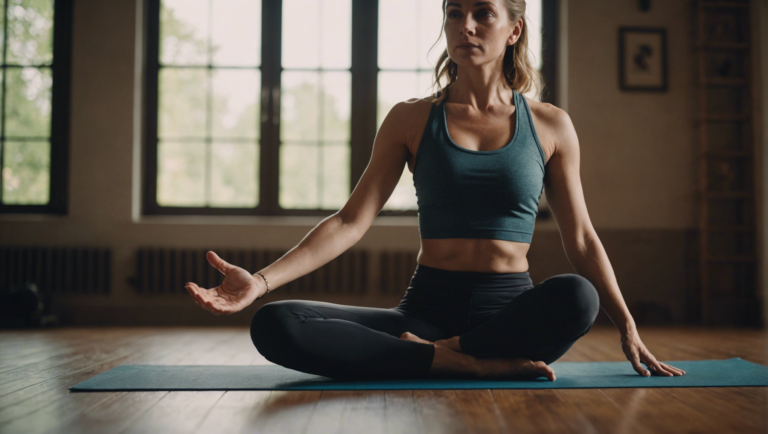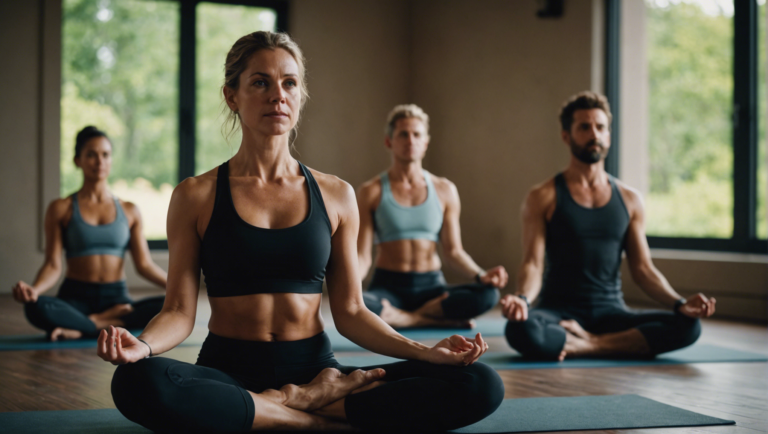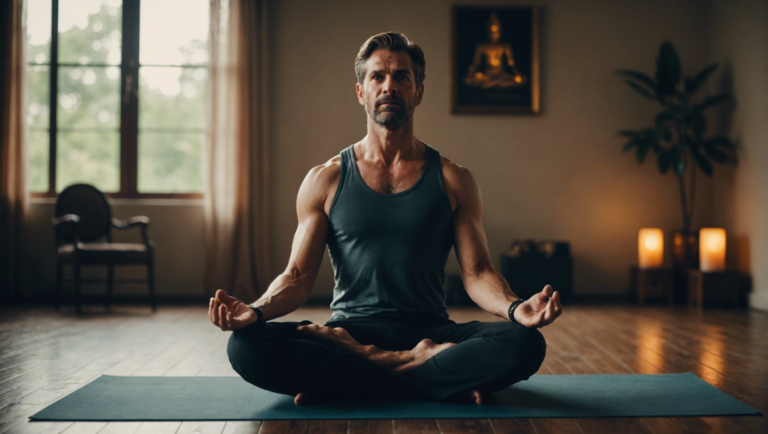Guidelines For Properly Storing Your Yoga Mat
Guidelines for Properly Storing Your Yoga Mat
Yoga mats are essential tools for any yoga practitioner, offering comfort, support, and stability during yoga sessions. Properly storing your yoga mat is crucial to maintain its quality and ensure its longevity. By following some simple guidelines, you can keep your yoga mat in excellent condition for a long time.
Choosing the Right Location for Storage
When deciding where to store your yoga mat, opt for a cool and dry place away from direct sunlight. Prolonged exposure to sunlight can cause the colors on your mat to fade and the material to break down. Additionally, avoid storing your yoga mat in damp or humid areas, as this can promote mold and bacteria growth.
Cleaning Before Storage
Before stowing away your yoga mat, make sure to clean it thoroughly. Use a gentle yoga mat cleaner or a mixture of water and mild soap to wipe down the surface of the mat. Allow it to air dry completely before rolling it up for storage. This step is crucial to prevent any dirt, sweat, or bacteria from accumulating on the mat while it is not in use.
Rolling vs. Folding
The most common way to store a yoga mat is by rolling it up. This method helps maintain the shape of the mat and prevents creases or folds that can affect its performance during yoga practice. Avoid folding your mat if possible, as this can cause permanent creases that may interfere with your grip and balance while practicing yoga.
Using a Yoga Mat Strap or Bag
Investing in a yoga mat strap or bag can make storing and transporting your yoga mat much more convenient. A strap allows you to roll up your mat securely and carry it over your shoulder, while a bag provides extra protection from dust and dirt when not in use. Look for a breathable bag to prevent moisture buildup inside.
Avoiding Heavy Items on Top
When storing your yoga mat, refrain from placing heavy objects on top of it. The added weight can cause the mat to deform or create permanent indentations. Opt for a dedicated space where the mat can lie flat or roll up without any additional pressure on top.
Regularly Air Out Your Yoga Mat
To prevent odors and bacteria growth, it’s essential to air out your yoga mat regularly. After each use, unroll the mat and let it breathe for some time in a well-ventilated area. This practice not only keeps your mat fresh but also helps maintain its integrity over time.
Inspecting for Signs of Wear
Periodically inspect your yoga mat for any signs of wear and tear. Look for fraying edges, peeling surfaces, or unusual odors that may indicate the need for a replacement. By addressing issues early on, you can prolong the lifespan of your mat and continue to enjoy your yoga practice without any interruptions.
Proper storage is key to maintaining the quality and performance of your yoga mat. By following these guidelines for storing your yoga mat, you can ensure that it stays clean, fresh, and ready for your next yoga session. Remember to treat your yoga mat with care and respect, and it will reward you with comfort and support for many practices to come.
Cleaning and Maintenance Tips for Extending the Lifespan of Your Yoga Mat
Maintaining Your Yoga Mat for Longevity and Hygiene
Importance of Proper Cleaning and Maintenance
Ensuring the cleanliness and longevity of your yoga mat is essential for both hygiene and performance. A well-maintained yoga mat not only provides a clean surface for your practice but also extends its lifespan, saving you money in the long run. By following simple cleaning and maintenance tips, you can keep your yoga mat in top condition for years to come.
Regular Cleaning Routine
Regularly cleaning your yoga mat can prevent the buildup of dirt, sweat, and bacteria, which can lead to unpleasant odors and deterioration of the mat material. After each practice session, take a few minutes to wipe down your mat with a mat cleaner or a solution of mild soap and water. Use a soft cloth or sponge to gently scrub the surface and then rinse it thoroughly with water. Avoid using harsh chemicals or cleaning agents that can damage the mat.
Deep Cleaning
In addition to daily wiping, it is important to deep clean your yoga mat on a regular basis. Depending on how often you use your mat, aim to deep clean it at least once a month. You can either hand wash your mat in the bathtub using a mild detergent or machine wash it on a gentle cycle. Always refer to the manufacturer’s instructions for the recommended cleaning method to avoid damaging the mat.
Drying Your Yoga Mat
Properly drying your yoga mat is crucial to prevent mold and mildew growth. After cleaning, lay your mat flat on a dry towel and gently roll it up to absorb excess water. Avoid wringing or twisting the mat, as this can damage the material. Hang your mat to air dry in a well-ventilated area, away from direct sunlight. Ensure that both sides of the mat are completely dry before rolling it up for storage.
Storage Tips
Storing your yoga mat properly can also contribute to its longevity. Avoid leaving your mat exposed to direct sunlight or extreme temperatures for prolonged periods, as this can cause it to deteriorate quickly. Instead, store your mat in a cool, dry place away from sunlight when not in use. Consider using a yoga mat bag to protect it from dust, dirt, and moisture when transporting or storing it.
Inspection and Replacement
Regularly inspect your yoga mat for signs of wear and tear, such as peeling, fading, or thinning. If you notice any damage that affects the integrity of the mat or compromises your practice, it may be time to replace it. Investing in a high-quality yoga mat and following proper cleaning and maintenance practices can help you enjoy your practice to the fullest while ensuring the longevity of your mat.
By following these guidelines for cleaning and maintaining your yoga mat, you can extend its lifespan, improve your practice experience, and prioritize hygiene. Regular cleaning, deep cleaning, proper drying, storage, and timely replacement are all key aspects of caring for your yoga mat. these tips into your routine will not only benefit your practice but also contribute to a more sustainable and mindful approach to yoga equipment maintenance.
The Importance of Using a Yoga Mat Towel During Practice
Yoga practitioners often invest in quality equipment to enhance their practice and ensure optimal performance. While a yoga mat is a fundamental piece of gear, using a yoga mat towel can significantly elevate your practice. Whether you’re a beginner or an experienced yogi, incorporating a yoga mat towel into your routine offers various benefits that enhance your overall experience on the mat.
Enhancing Hygiene and Cleanliness
One of the primary advantages of using a yoga mat towel is its ability to enhance hygiene during your practice sessions. Yoga involves a significant amount of physical exertion, leading to sweat accumulation on the mat’s surface. Over time, this sweat can breed bacteria and germs, creating an unhygienic practice environment. By placing a yoga mat towel on top of your mat, you create a barrier that absorbs sweat and prevents it from seeping into the mat material. This not only keeps your mat clean but also minimizes the need for frequent washing, prolonging its lifespan.
Improved Grip and Stability
Another key benefit of incorporating a yoga mat towel into your practice is the enhanced grip and stability it provides. Traditional yoga mats can sometimes become slippery, especially during hot and sweaty sessions or when practicing challenging poses. A yoga mat towel typically features a non-slip surface that offers superior traction, allowing you to maintain stability in various poses and transitions. The added grip not only helps prevent slips and falls but also supports your alignment and form, enabling you to move confidently through your practice.
Enhanced Comfort and Cushioning
Yoga mat towels often come with an additional layer of cushioning, providing extra support and comfort during your practice. This is particularly beneficial when practicing on hard surfaces or when performing poses that put pressure on sensitive areas, such as the knees, elbows, or spine. The cushioning properties of a yoga mat towel help reduce discomfort and joint strain, allowing you to focus on your breath and movement without distractions. Additionally, the added padding can improve your overall practice experience, making challenging poses more accessible and enjoyable.
Versatility and Portability
One of the great advantages of using a yoga mat towel is its versatility and portability. Unlike traditional yoga mats, which can be bulky and difficult to carry around, yoga mat towels are lightweight, compact, and easy to transport. Whether you’re heading to a yoga class, practicing outdoors, or traveling, a yoga mat towel can be rolled up or folded into a compact size, fitting easily into your bag or luggage. This convenience allows you to maintain your practice routine wherever you go, ensuring that you can stay grounded and centered no matter the location.
Incorporating a yoga mat towel into your practice can significantly enhance your overall yoga experience by improving hygiene, grip, stability, comfort, and portability. Whether you’re practicing at home, in a studio, or on the go, a yoga mat towel is a versatile accessory that offers numerous benefits to support your practice and help you achieve your wellness goals. So, next time you roll out your mat, consider adding a yoga mat towel to elevate your practice to new heights.
Different Types of Yoga Mats and Their Unique Storage Requirements
Yoga mats are essential accessories for any yoga practitioner. They provide cushioning, support, and traction during yoga sessions, enhancing comfort and stability. Properly storing your yoga mat is key to maintaining its quality and longevity. Different types of yoga mats have unique storage requirements to ensure they remain clean, dry, and in good condition for your next practice session.
Understanding Different Types of Yoga Mats
There are various types of yoga mats available in the market, each with its unique features and materials. Common materials used for yoga mats include PVC, TPE, rubber, and jute. PVC mats are durable and offer excellent grip, while TPE mats are eco-friendly and biodegradable. Rubber mats provide superior cushioning, and jute mats are natural and sustainable. Understanding the type of yoga mat you have will help you determine the best storage practices to maintain its quality.
Guidelines for Properly Storing Your Yoga Mat
-
Clean Your Mat Before Storage: Before storing your yoga mat, ensure it is clean and free from sweat, dirt, or any lingering odors. Use a gentle yoga mat cleaner or a mixture of water and mild soap to wipe down the mat. Allow it to air dry completely before rolling it up for storage.
-
Roll Your Mat Loosely: When storing your yoga mat, roll it loosely to prevent permanent creases or wrinkles. Rolling your mat too tightly can cause damage to the material over time. Avoid folding your mat as it can lead to cracks or tears, especially in thicker mats.
-
Store Your Mat in a Cool, Dry Place: Choose a cool, dry place to store your yoga mat to prevent mold and mildew growth. Avoid storing your mat in direct sunlight or humid areas, as excessive heat and moisture can degrade the material and lead to bacterial growth.
-
Use a Mat Bag or Carrier: Invest in a yoga mat bag or carrier to protect your mat during transport and storage. A breathable bag will allow air circulation and prevent moisture buildup, helping to maintain the freshness of your mat between uses.
-
Rotate Your Mat Regularly: If you have multiple yoga mats, rotate their use to prevent overuse and extend their lifespan. Rotating your mats allows them to air out and recover between sessions, reducing wear and tear on any single mat.
-
Avoid Storing Heavy Objects on Top: When storing your yoga mat, avoid placing heavy objects on top of it, as excessive weight can cause permanent indentations or damage to the mat’s surface. Opt for a dedicated storage area where your mat can lay flat or hang freely.
Properly storing your yoga mat is essential for preserving its quality and ensuring optimal performance during your yoga practice. By following these guidelines tailored to the specific type of yoga mat you own, you can prolong its lifespan and continue to enjoy the benefits of your favorite yoga accessory for years to come. Remember to prioritize cleanliness, ventilation, and careful handling to maintain the integrity of your yoga mat and enhance your overall yoga experience.
How to Choose the Right Storage Solution for Your Yoga Space
Factors to Consider When Choosing a Yoga Mat Storage Solution
Storing your yoga mat properly is essential to maintain its quality and extend its lifespan. Whether you practice yoga at home or in a studio, having the right storage solution can make a significant difference. Here are some guidelines to help you choose the right storage option for your yoga space:
Consider Your Space Constraints and Yoga Practice Frequency
Before selecting a storage solution for your yoga mat, assess the available space in your home or yoga studio. If you have limited space, you may want to consider wall-mounted storage racks or compact storage bags that can be easily tucked away. Additionally, take into account how often you practice yoga. If you practice daily, opt for a storage solution that allows quick and convenient access to your mat.
Opt for Proper Ventilation to Prevent Mold and Mildew Growth
When storing your yoga mat, it’s crucial to choose a storage solution that allows for adequate ventilation. Moisture from sweat can accumulate on your mat, leading to the growth of mold and mildew if not properly ventilated. Avoid storing your mat in closed containers or tight spaces. Instead, consider open-air storage options such as wall-mounted racks or breathable mesh bags.
Choose Sustainable and Eco-Friendly Storage Materials
When selecting a storage solution for your yoga mat, opt for sustainable and eco-friendly materials whenever possible. Avoid plastic storage containers or bags that can emit harmful chemicals and contribute to environmental pollution. Look for storage options made from natural materials like bamboo, cotton, or hemp, which are durable and environmentally friendly.
Prioritize Convenience and Easy Accessibility
Choose a storage solution that offers convenience and easy accessibility to your yoga mat. Consider wall-mounted storage racks that allow you to display your mat beautifully while keeping it within arm’s reach. Alternatively, storage bags with adjustable straps or handles can make it easy to transport your mat to and from your yoga practice.
Invest in Multi-Functional Storage Solutions
To maximize space in your yoga area, consider investing in multi-functional storage solutions that can accommodate your mat as well as other yoga accessories. Look for storage racks with additional hooks or compartments for storing yoga blocks, straps, or towels. By consolidating your yoga gear in one place, you can create a more organized and clutter-free practice space.
Choosing the right storage solution for your yoga mat is crucial in maintaining its quality and ensuring a pleasant practice experience. By considering factors such as space constraints, ventilation, materials, convenience, and multi-functionality, you can find a storage option that suits your needs and enhances your yoga space. Remember to prioritize sustainability, accessibility, and quality when selecting a storage solution for your yoga mat.
Conclusion
Properly storing your yoga mat is crucial to maintain its quality and prolong its lifespan. By following the guidelines outlined in this article, you can ensure that your yoga mat remains in top condition for a long time to come. Remember to keep your mat clean and dry, store it in a cool and dry place away from direct sunlight and moisture, and avoid folding it for extended periods. Regular cleaning and maintenance will not only keep your mat hygienic but also prevent premature wear and tear.
In addition to proper storage, cleaning and maintenance are also vital aspects of caring for your yoga mat. Regularly wiping down your mat with a gentle cleanser or a mixture of water and vinegar can help remove dirt, sweat, and bacteria. Air-drying your mat after cleaning and before storage is essential to prevent mold and mildew growth. By incorporating these cleaning and maintenance tips into your routine, you can extend the lifespan of your yoga mat and enjoy a more hygienic practice.
Using a yoga mat towel during your practice can enhance your overall experience by providing additional grip, cushioning, and moisture absorption. Whether you prefer hot yoga, vigorous vinyasa flows, or restorative practices, a yoga mat towel can enhance your comfort and stability on the mat. Invest in a high-quality yoga mat towel that suits your needs and practice style to elevate your yoga sessions and maintain a clean practice space.
When it comes to choosing the right storage solution for your yoga mat, consider the type of mat you own and your available space. Different types of yoga mats, such as PVC, TPE, rubber, or cork mats, have unique storage requirements based on their material composition. PVC mats are more susceptible to heat and sunlight damage, while natural rubber mats may require more ventilation to prevent odor and bacteria buildup. Understanding your mat’s specific needs will help you select the most suitable storage option for your yoga space.
Take into account your yoga space and lifestyle when deciding on a storage solution for your yoga mat. Whether you practice at home, in a studio, or on the go, there are various storage options available, such as wall-mounted racks, carrying straps, mat bags, or dedicated mat hangers. Choose a storage method that is convenient, practical, and aligns with your organizational preferences. By keeping your yoga mat properly stored and cared for, you can optimize your practice and create a welcoming yoga space that inspires mindfulness and serenity.





